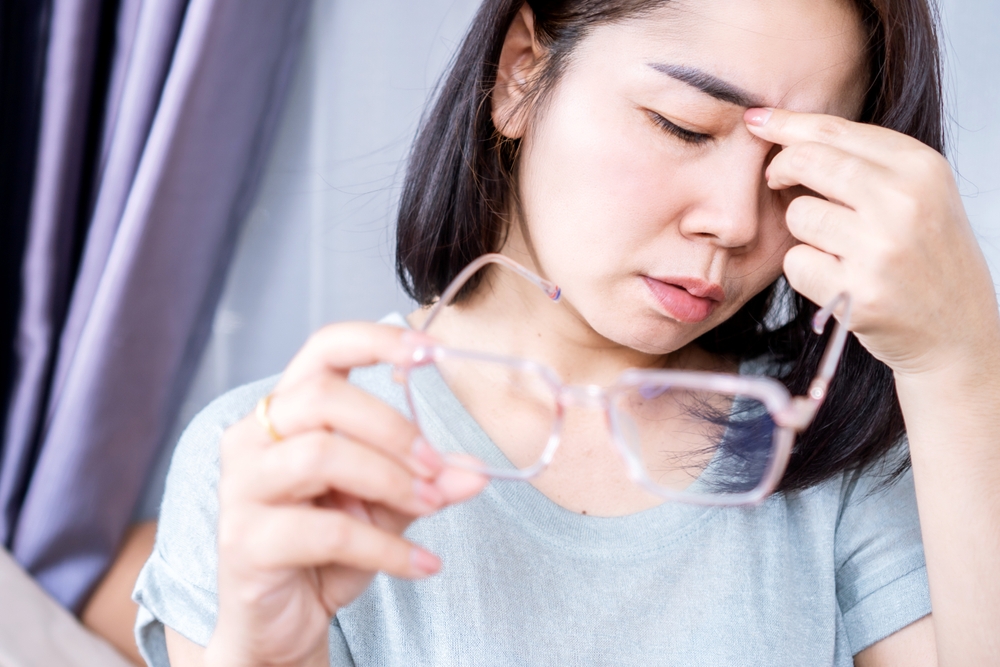
Dry eye syndrome is a common condition where your eyes do not produce enough tears. It can also occur when the tears evaporate too quickly. The result is discomfort and irritation that can affect daily life.
Symptoms of Dry Eye Syndrome
People with dry eye syndrome often experience a range of symptoms. These include a gritty or scratchy feeling in the eyes. You may also notice burning, stinging, or redness. Some people feel like there is something in their eye, even when there is not. Excessive watering or blurry vision are also common symptoms. It is important to recognize these signs early to prevent further irritation.
Common Causes of Dry Eyes
Some of the most common causes of dry eyes are:
Age — As you get older, tear production naturally decreases, especially after age 50.
Hormonal Changes — Hormonal shifts, particularly during pregnancy or menopause, can lead to dry eye symptoms.
Environmental Factors — Wind, smoke, and dry air can irritate your eyes, making them feel dry.
Health Conditions — Conditions like rheumatoid arthritis and diabetes increase your risk of developing dry eyes.
Medications — Certain medications, including antihistamines and decongestants, may reduce tear production.
Contact Lenses — Wearing contacts can lead to dryness and discomfort in your eyes.
How Dry Eye Syndrome Affects Your Eyes
When the eyes do not get enough moisture, they become irritated. This can lead to inflammation and damage to the surface of the eye. Over time, untreated dry eyes can lead to corneal ulcers or scarring. Severe cases may cause vision problems if left untreated. It is important to address symptoms early to avoid these complications.
Treatment Options for Dry Eyes
There are several ways to manage dry eye syndrome. Here are some common treatment options:
Artificial Tears — These lubricating eye drops help replace missing moisture. They come in preservative-free formulas for sensitive eyes.
Prescription Medications — For severe cases, medications like Restasis can help increase tear production.
Punctal Plugs — These small devices are inserted into tear ducts to help keep tears on the eye longer.
Lifestyle Changes — Simple habits like taking breaks from screens can help reduce symptoms.
Adjusting Humidity — Adding moisture to the air with a humidifier can relieve dryness in your eyes.
Wearing Sunglasses — Protecting your eyes from wind and dust by wearing sunglasses outdoors is helpful.
These treatment options can work together to manage dry eye symptoms and improve comfort.
Preventing Dry Eyes
There are several steps you can take to help prevent dry eyes. Drink plenty of water to stay hydrated. Avoid smoking, as it can dry out your eyes. Use a warm compress to open up clogged glands in your eyelids. Cleaning your eyelids regularly can also help maintain moisture.
If you work in an air-conditioned room, consider using a humidifier. Make sure to blink regularly while using screens to keep your eyes lubricated. Taking care of your eyes daily can help prevent dry eye symptoms from becoming a long-term issue.
When to See a Doctor
If you experience persistent symptoms of dry eyes, it is important to seek medical advice. A healthcare provider can help identify the cause and recommend appropriate treatment.
For more on dry eye syndrome, visit Eyediology Vision Care. Our office is in Las Vegas, Nevada. Call (702) 912-4254 to book an appointment today.
Sources:
https://www.mayoclinic.org/diseases-conditions/dry-eyes/symptoms-causes/syc-20371863
https://www.webmd.com/eye-health/ss/slideshow-dry-eyes



